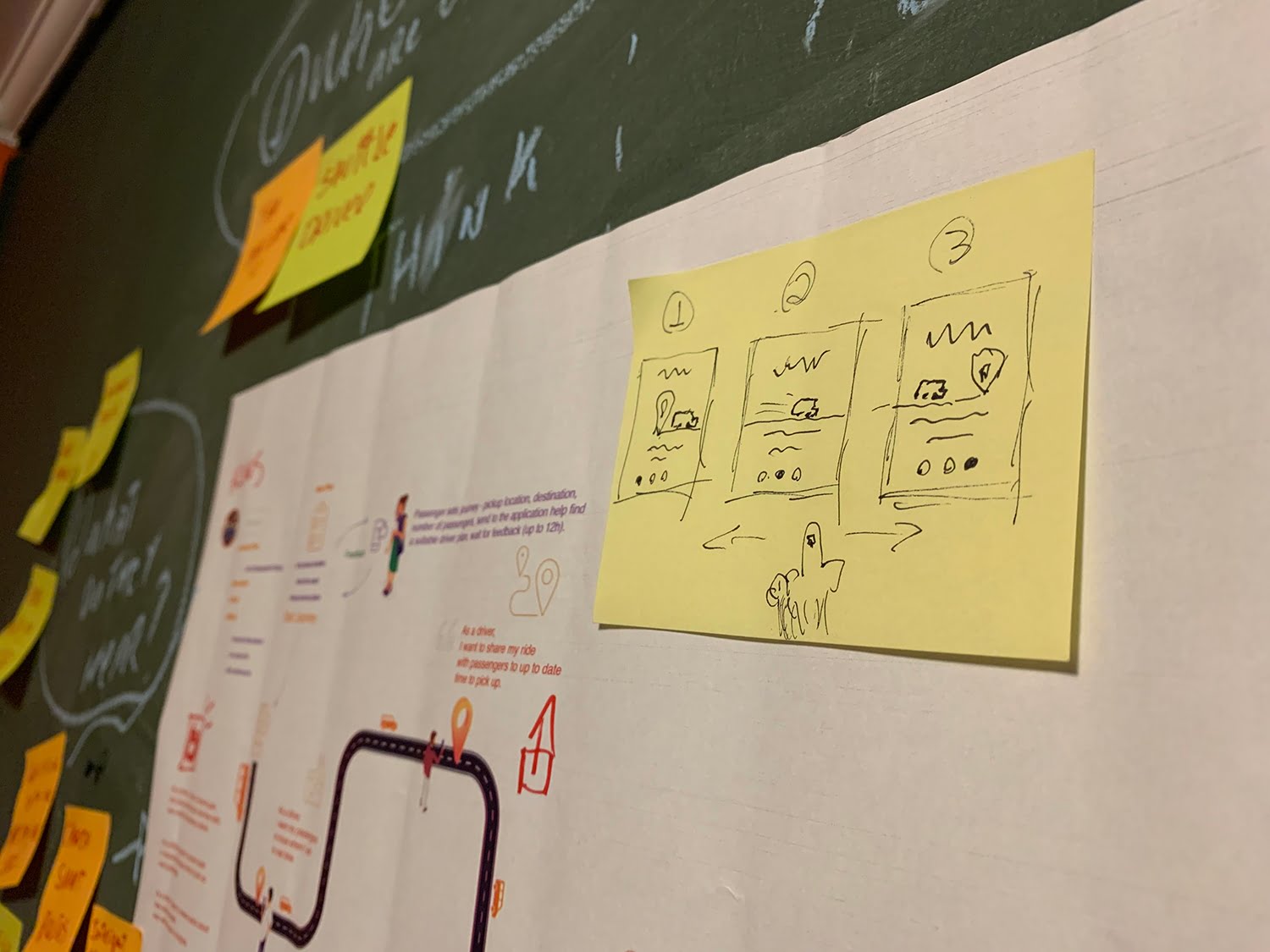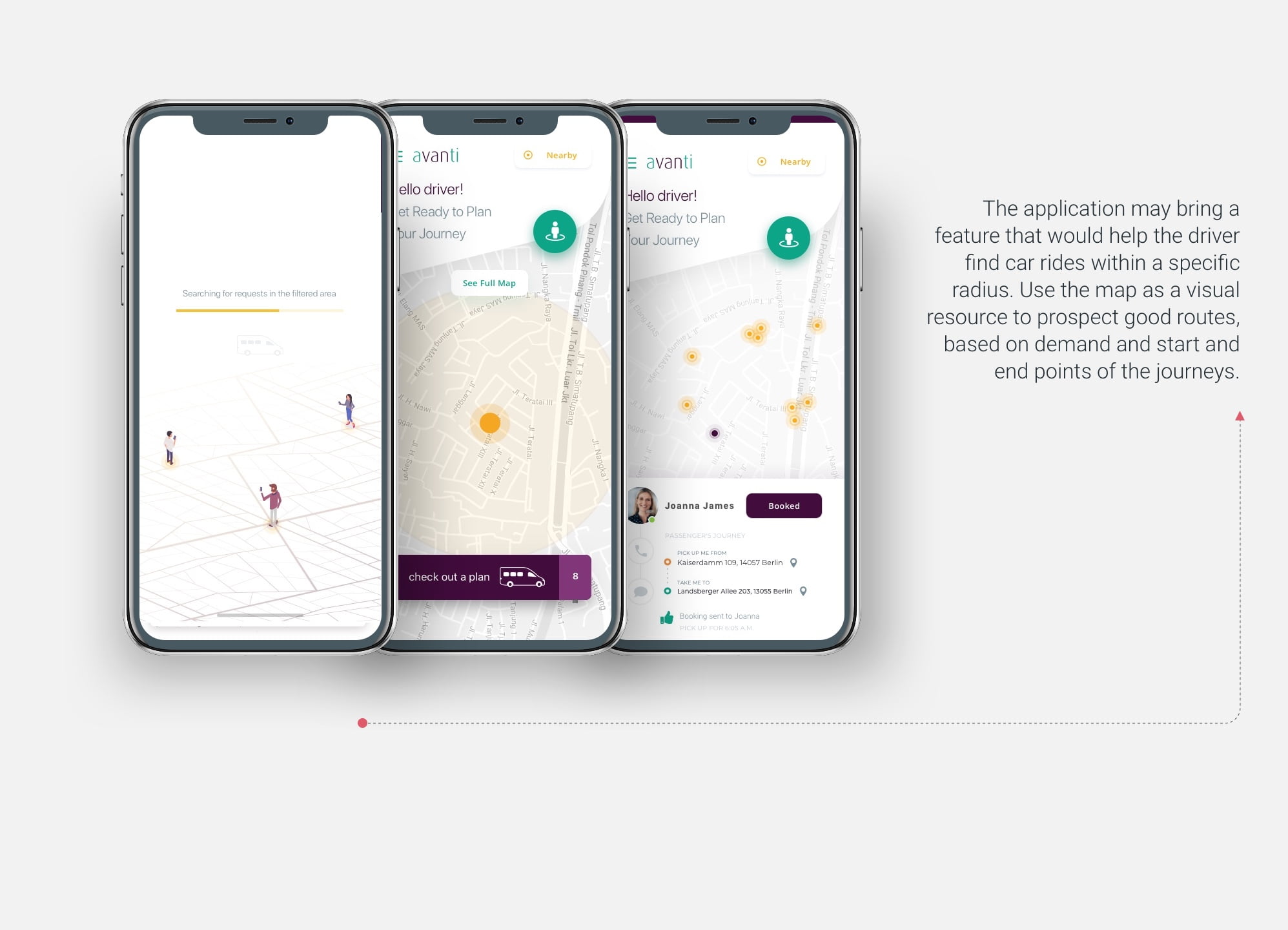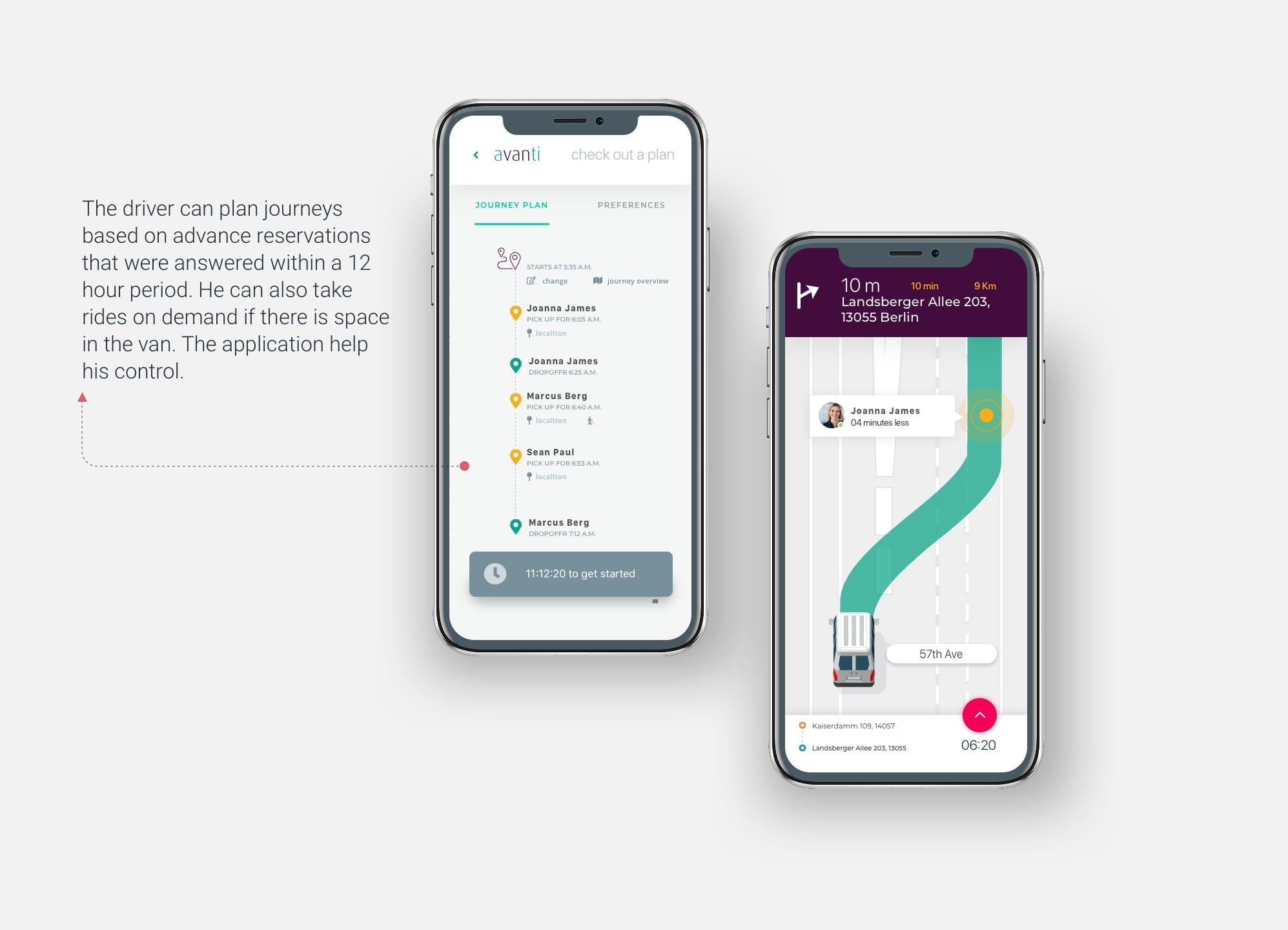Drivers
Increasing Smartphone and Internet penetration
Increase in cost of vehicle ownership
Reduction car owner shop among millennials
Rising fuel prices
Traditional on-demand bus services for rural areas were implemented for years. Customers called the reservation center and buses arrived 1 hour later to pick them up.
No online or mobile booking was available. Moreover, there was a lot of manual effort required to dispatch the ride request to the driver and vehicle.
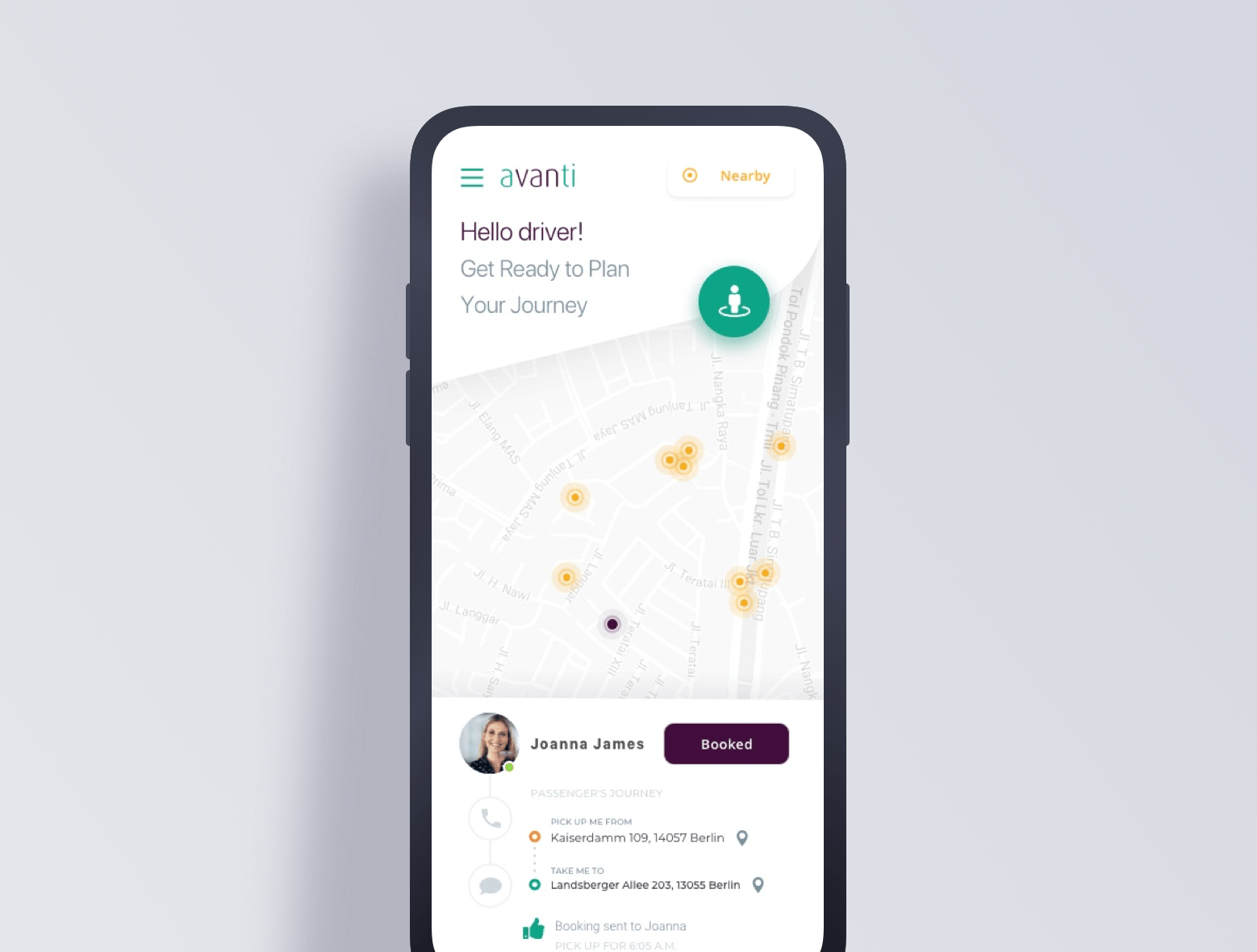
Traditional on-demand bus services for rural areas were implemented for years. Customers called the reservation center and buses arrived 1 hour later to pick them up.
No online or mobile booking was available. Moreover, there was a lot of manual effort required to dispatch the ride request to the driver and vehicle.


Imagine a flexible and decentralized shuttle service without any centrally controlled dispatching or management. The service is only operated by shuttle drivers themselves.
There is an app for customers to request rides and another app for drivers to accept these requests and find the fastest way towards the customer.
What would the perfect driver application look like?
As a driver…
I want to know where my possible customers are, when and where they want to go.
What is key for a driver to conveniently transport passengers?
Find a smart solution which does not distract the driver

Global players primarily control the market for tour-sharing and include a number of regional players. Among the major players in the tour-sharing market are Uber (USA), Lyft (USA), DiDi (China), Grab (Singapore), Gett (Israel), Ola (India), BlaBlaCar (France), Lime (USA), and Hertz (USA).
The travel-sharing market is expected to grow at a CAGR of 19.87% between 2018 and 2025, reaching a market size of $218.0 billion by 2025, from $61.3 billion in 2018.
The main factors of this market include the growing need for personal mobility after the increase in urbanization and the drop in car ownership.
by: Market and Markets dot com
Increasing Smartphone and Internet penetration
Increase in cost of vehicle ownership
Reduction car owner shop among millennials
Rising fuel prices
Resistance from traditional transport services
Complex transport policies of different countries
Increasing user base among millennials and potential generation
Development of autonomous vehicles to ride hailing
Public-private partnerships
Micro Mobility
Profitability and sustain ability model
First mile las mile
by: Market and Markets – Ride Sharing Market
I found some direct and indirect competitors. I focused my research on understanding the added features, value proposition, and usability to understand the operation of the business and think of something different.

I tried abstracting from the data to quickly focus on a solution.
Combining the problem statement, analyses, and insights, I chose three keys to work, from trends:
I focused the initial effort on the user through the methods of Personas Development and Empathy Mapping as the first step of my introspective sprint.
After secondary research using internet tools, I was able to structure an initial understanding of the user and pain points to work with. There is some similarity with this type of user in Brazil, although there is no specific app for this purpose.
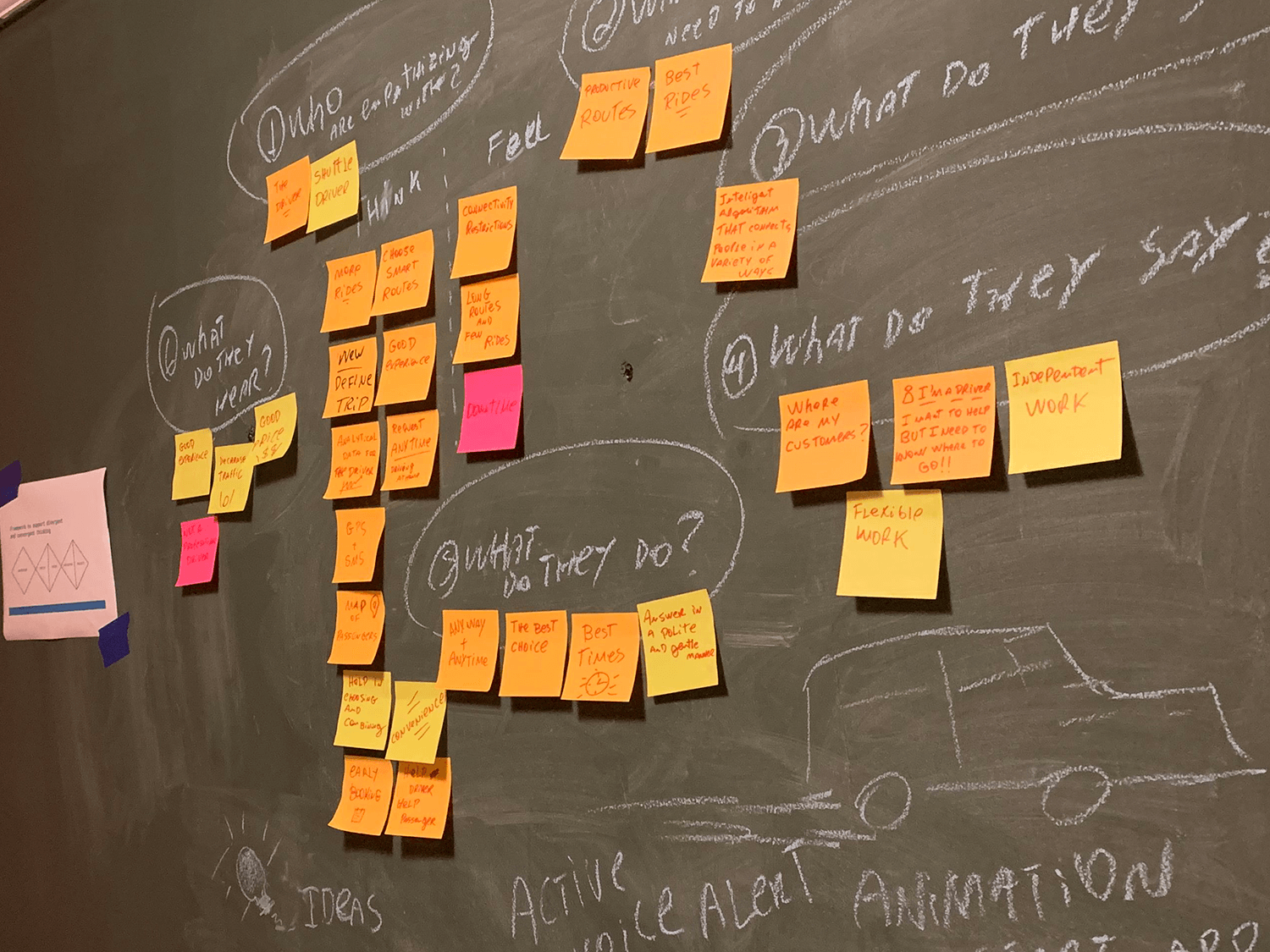
To have a starting point I made a construction based on the main archetype. Within the research, I’ve even used feedback left in similar competitors.
On my blackboard I tried to visually expose a map of empathy, always leaving open the possibilities and ideas that can be used. I used this method to make better use of the time when I understood my user.
Unique and introspective decisions to jump to the next stage are based on the Story Map, created from an empathy diagram. I skipped the affinity diagram because, at this point, I didn’t have time to think too much. I dedicated part of my time to designing some prototypes in hi-fidelity.
